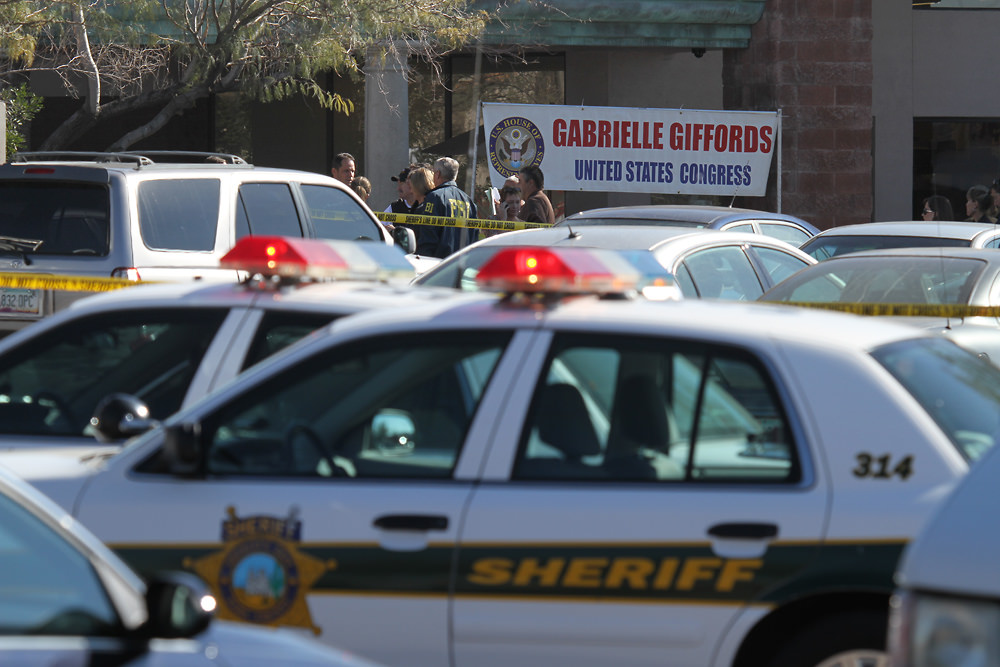This post is part of the “Would Someone Please Explain This to Me?” series.
Pauline Moore asks: What do the recent horrific shootings in Colorado say about the nature of political violence in the U.S.?
Events of this sort are as common as the day is long in American history.* To see that, though, one has to adopt the proper temporal scales: the number of such events per year (or decade) and an examination over decades of American history. It turns out that the recent Aurora shooting in Colorado and the Sikh Temple massacre in Wisconsin fit into a long established trend of such events: lone mass murderers who either have no (recognizable) political agenda or are unable to mobilize others in concert to carry out their plans. Writing in the 1979 edition of Violence in America, Richard Maxwell Brown offers a historical tour of American violence. In the section titled “Freelance Multiple Murder” (pp. 33-4) he observes that these events have “historically aroused deep emotions of horror in the populace.” Recalling the summer of 1966, Brown writes:
“In the spate of a few weeks, two shocking mass murders occurred. First, in a single terrible night in Chicago, Richard F. Speck murdered, one by one, eight student nurses. Then, less than a month later, Charles Wittman ascended the tower of the University of Texas library in Austin and left tower and campus strewn with the bodies of 16 dead and 31 wounded as a result of his unerring marksmanship. The utter horror of these two killing rampages attracted world-wide attention, but not a year goes by without the appearance of one or more multiple murders” [emphasis mine].
The point, of course, is that as horrible as events like this are, they are common once we widen the lens of time. How many American readers are familiar with the May 18, 1927, Bath School Disaster in which Bath, Michigan school treasurer Andrew Kehoe expressed his ire over a property tax by beating his wife to death, setting his farm buildings on fire (which he rigged to explode when the fire department arrived), and then blew up the local elementary school, killing 38 children and four teachers, and wounding another more than 50 other children and adults?
What stands out to me, then, when the news reports yet another multiple murderer, is the absence of historical perspective. It seems to me that as a society we wish to play ostrich, sticking our head in the sand when faced with abhorrent behavior, and believe that is aberrant, even when it is not. That is, our collective desire to reinforce desirable social behavior trumps our collective interest in viewing the world as it is. As I wrote in a post on Will Opines after the most recent report about the Sandusky affair was made public, we engage in a public paroxysm of morality play narratives. The outcome: “ought” renders “is” unseeable.
I am currently reading Jim Scott’s The Art of Not Being Governed. In it he delivers a wonderful dismemberment of the civilization v barbarism trope made so influential in the 20th Century education of English speaking school children by Toynbee’s A Study of History. It seems to me that this dichotomy between civilized and barbaric societies bears some of the burden for what I consider ostrich-ism in American culture. Few historians have taken Toynbee seriously since the 1960s, but there is a long lag in time between change in the academy and change in textbooks, and his ideas still have deep roots in the minds of Americans over the age of 30 (and perhaps many of those younger).
I leave you with this thought experiment. There are more than an estimated 310 million people in the United States. What surprises you more: that so many multiple murders take place, or that so few do? Take the conflict and, to some extent, vitriol that is part and parcel to interpersonal interaction in life, couple it with the access to weapons ranging from knives to guns and rifles, and ask yourself how many of the 310 million people out there will commit multiple murder this year? What stands out to me is how few people engage in such activity. Yet, when uninvolved people are the victims of some murderer on a (usually brief) killing spree, we somehow lose contact with the adage: the exception that proves the rule.
* The number of such events appears to rise with US wars (presumably because the number of people with both weapons training and post traumatic stress disorder rises), but I am unfamiliar with systematic empirical inquiry on the question [if readers know of any, please post in the Comments].
** neq is common computer code for the symbol “not equal”






0 comments
There is something useful about being shocked by mass murders, even if they are historically common. The alternative of accepting such events as unexceptional or ordinary brings risks of enabling them by passing up guardianship opportunities. If shock is what it takes to put in place interventions that make these episodes less likely, why try to disabuse the public of its sense of shock? This may, of course, heighten incentives for the suicidally inclined psychopath to commit sensational acts, but we should not ignore the downside of treating these as benign events. It could be useful, in any case — if very difficult — to explore prospects of testing empirically which approach produces fewer mass killings.
Are there any statistics readily available for an analysis? I would love to see a graph charting the number of “freelance multiple murderers” in the U.S. over time, possibly including locations and relevant world/political events as well, if anyone related to this blog could construct one.
Archer and Gartner’s 1976 piece “Violent Acts and Violent Times” in the American Sociological Review is a classic concerning post-war homicides (this in regard to your question regarding material on this). Highly enjoyable piece too!
//Ralph
Is your bottom-line that we should expect more of these, rather than fewer? Or is yours more of a comment on the tendency to scratch one’s head and say “I never thought this could happen here”?